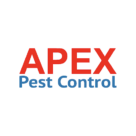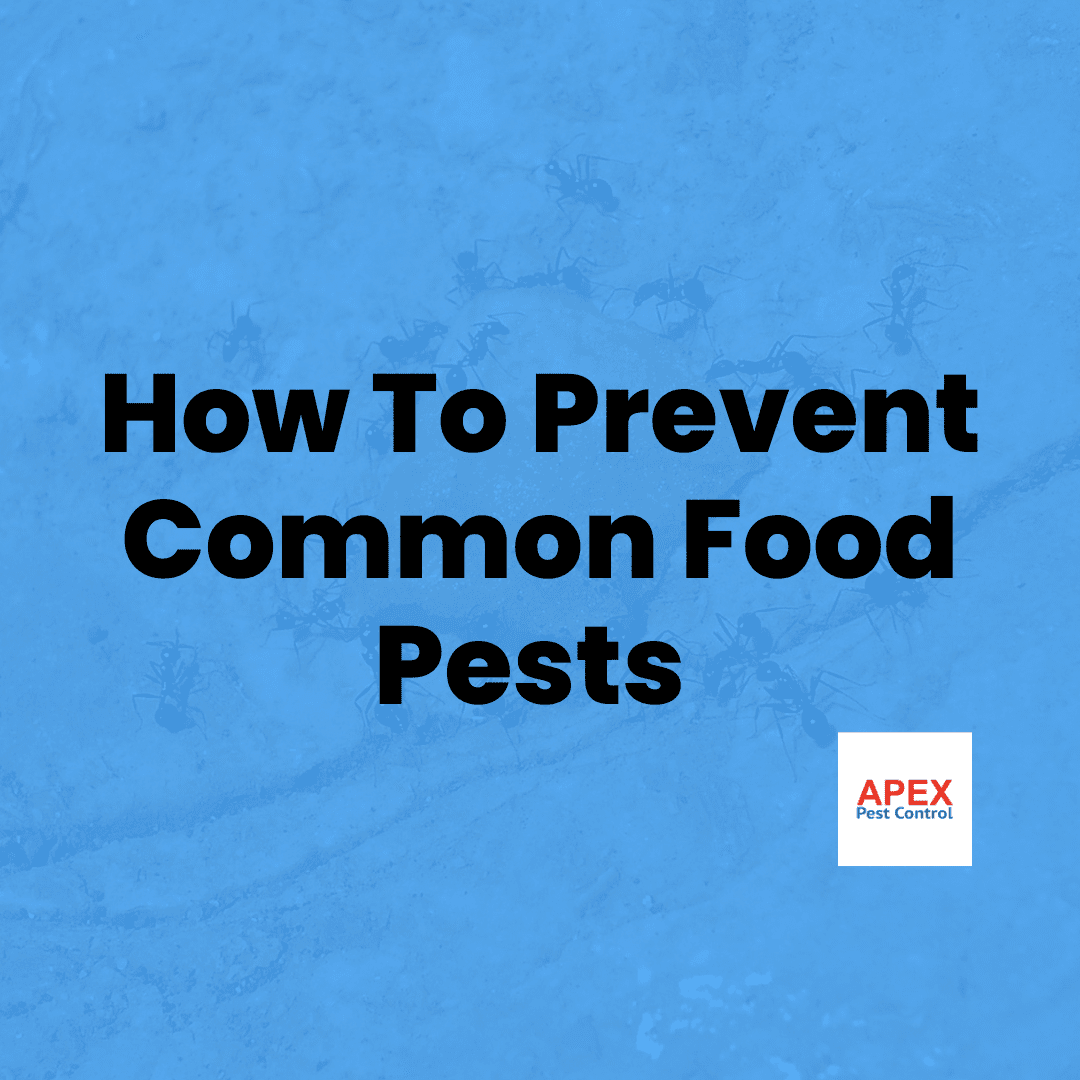How To Prevent Common Food Pests From Invading Your Space?
If you’re in the food business, you’ve probably heard ” restaurant pest control.” But what exactly is this process, and why does it matter? You can avoid these pests by reading this article, which outlines the most common food-related pest issues facing retailers and restaurants.
What Are The Most Common Food Pests?

Knowing some of the common pests found in food processing facilities is important for owners and managers. Here are a few of the biggest pest threats, grouped by region and type of food:
Rodents
Rodents can:
- Sneak into buildings through doorways, cracks, and openings that are very small
- Spread disease
- Eating, feeding, and breeding in food processing facilities
- Damage equipment
- Damage goods and contaminate food packaging
- Set off electrical fires
- Hazardous to health and safety of any establishment
You can help prevent rats and mice by:
- Securing trash receptacles and dumpster lids
- Removing tall weeds and grass
- Hiring a professional commercial pest control company specialising in commercial pest management and rodent and wildlife removal to use traps, baits, and physical barriers that will help prevent pest invasions is a good idea.
Flies
Flies can:
- Enter through openings such as doors and windows
- Spread of infectious diseases, such as typhoid fever and dysentery and even cause food poisoning
- Be annoying.
- Be difficult to control
- Increase in population during the summer months
- Sting or bite, depending on the species.
- Live in drains and thrive on trash receptacles.
- Contaminate food or packaging materials
- Cause reputational damage
Commercial pest control can help you prevent flies:
- It is important to have optimised trapping tools at key entry points to prevent future invasions.
- Using sanitation methods to deter flies helps minimise fly infestation
- Assesses the possibility of caulking or weather-stripping facilities to control flesh flies further
- Included are drain fly removal and ultraviolet insect light traps (ILTs) for attracting and capturing fruit flies
Cockroaches
Cockroaches can:
- Spread disease-causing bacteria, including E. coli and Salmonella
- Slip through the cracks
- Live in the dark
- Exposure to allergens may trigger asthma attacks
- occur in populations of hundreds or even thousands.
- Live in wood and cardboard boxes.
- Disrupt and upset customers, employees, and guests.
Help control cockroaches with the proven Five-Step Cockroach Control System that uses an Integrated Pest Management programme to eliminate the source of the infestation and reduce cockroach activity as quickly as possible.
- Immediately remove all cockroaches physically.
- Void treatment.
- Insecticide baiting.
- Crack and crevice repair.
- IGRs (Insect Growth Regulators).
Stored Product Pests
Known as pantry pests, stored product insects (moths, weevils, and beetles) can damage your abundant food supply by:
- Reproduction and rapid population growth
- Multiple sources of pest infestation
- Lay eggs and larvae on surfaces
- Infesting food shipments
- Attack a variety of foods, including whole grains, wheat, corn, barley, rice, beans, nuts, etc.
Spiders
Spiders can:
- Comes in a wide range of sizes
- Be dangerous or non-dangerous
- Live outdoors or indoors
- Spin webs
Identifying spiders and their hiding spots is revealed by a thorough, professional commercial pest control inspection.
Birds
Birds can:
- Carry pathogens that spread diseases
- Have nesting that might be infested with bird mites
- Cause property damage or contamination in areas of production or shipping
- Tarnish a facility’s image
- Create a slipping hazard by leaving unsanitary droppings
- Costs you money to clean, maintain, and repair
Professional pest control services can address bird control with:
- Current approaches to solving pest problems and preventing them from returning include control gel, wire barriers, spikes and shock treatments, and various other methods.
- Technicians familiar with the local bird species and trained in protocols
What Are The Major Problems Food Pests Could Cause?

Disease-causing pests carry bacteria, viruses, protozoa and helminths, harming consumers and employees of food processing or handling businesses. They can also cause physical contamination of ingredients and processed food products from, for example, droppings, shed fur and feathers, body parts, nesting material, and damaged packaging.
Common food pests can damage your business reputation. Pests leave a negative impression of how your business handles food and could cause your customers to lose trust. In addition, if pests plague your business, health inspectors could come and close it down.
So, how can you protect yourself? Read on to find out the major problems common food pests can cause. This article will help you find the best solutions for your business’ pest control needs.
As a business owner, you have to keep your business clean and sanitary to prevent food-borne illnesses and ruined reputations. Pest infestations could also lead to hefty fines and health code violations.
Keeping your establishment clean and pest-free is crucial to keeping your business operating smoothly. Pests could damage your business’ appearance and sales if they cause a health risk. Pests could also destroy your brand’s reputation, which is not something that anyone would want to experience.
Are There Laws Around Common Food Pests?

Legislation worldwide requires pests to be excluded from food processing plants and the prevention of food contamination by pests by taking effective measures to maintain hygiene and keeping adequate documentation. It includes applying current good manufacturing practises and the use of systems to:
- Identify critical points at each stage in the process that affect food safety, including the supply chain;
- implement effective control procedures;
- maintain adequate procedures to guarantee their effectiveness; and
- review control procedures periodically and when changes occur to operations.
How Do Pests Contaminate Food?

Infested food stores pose a serious threat to both consumers and businesses. Pests can burrow into packaging materials. In turn, this can be a setback to businesses and the reputation of their products.
Pests contaminate food, but they can also spread diseases to humans through their droppings and fur. Businesses should sanitise and clean their equipment regularly and conduct thorough sanitation and monitoring to avoid contamination.
The most common food pests include rats, mice, and birds. These animals often live in the same building or close to food-processing equipment. Regardless of the type of business, pests are a major concern. Although a small pest infestation doesn’t affect your bottom line, it can significantly negatively impact your business.
Various kinds of stored-product bugs make their way into stored produce, including mites, moths, beetles, weevils, etc. Even though they are incredibly small, these insects can contaminate large quantities of stored produce by making tiny holes.
It can lead to infected food, negatively impacting your consumers’ health. The presence of webbing around food spills, beams, and window sills is indicative of their presence. Remove these pests and fumigate your property by contacting your pest control professional.
An ant infestation is more of a nuisance than a threat to food safety since it can plague food areas, cupboards, and shelves and make its way into packaging, ruining your stock. Nests are usually in brick cracks inside walls of buildings, under paper, etc.
That makes getting rid of them difficult. Still, a professional pest controller will find the source of the problem and use substances stronger than typical insecticides to provide long-term success.
It isn’t easy to see cockroaches at night since they tend to appear during the evening and eat virtually anything. Their presence could lead to disease transmission. When regularly inspecting equipment, incoming goods, storage areas, displays, and the building itself, you should watch for signs such as droppings, skin casts, and egg cases.
You should also appropriately take care of waste storage areas and keep drains clear of debris. Suppose you do happen to find a large infestation. Thus, professional assistance is essential in such a case to ensure that the food environment is chemical-free control methods.
Flies in hot weather will breed on fresh foods and feast upon them. These flies are short-lived but can multiply quickly, causing swarms outside and inside your building.
No matter the product, keep bins and drains clean to avoid attracting flies. You might want to do thorough weeding, too, as they also eat plants. House flies contaminate everything they touch, thus requiring immediate removal to prevent illness.
Rats and mice do not only cause health hazards; they can get into the building’s fixtures and cause damage, compromising the building’s integrity. They are happy to feast on all things edible and reside within anything. Signs of rodents can include droppings, squeaks, gnawing sounds or tracks of oily fur.
Conclusion
When pest activity appears in food processing facilities, it’s imperative to take immediate action before populations increase or product, and structural damage occurs. In addition, pest-related health code violations can hurt company reputations, result in regulatory fines, and, in extreme cases, even threaten company closure.
An experienced pest control company can help food-processing facilities determine what attracts pests, how to prevent them, identify structural and sanitation problems that may contribute to their presence, and eliminate infestation risks.
If you need professional pest control advice or assistance in Yorkshire, UK. Apex Pest Control should be contacted.

Tony Johnson, Founder & Lead Technician at Apex Pest Control, is a BPCA and NPTA accredited pest management expert with over 35 years’ hands-on experience. Tony specialises in Integrated Pest Management and ensures all services comply with UK pest legislation, including the Wildlife and Countryside Act 1981 and COSHH Regulations 2002. His commitment to continual learning and adapting to industry best practices means clients receive effective, safe solutions for pests affecting homes and businesses across South Yorkshire. Tony’s dedication to professional standards, ethical treatment methods, and local expertise has made him a trusted partner for pest control and prevention.
-
BPCA & NPTA accredited | CHAS certified
-
Committed to UK pest law compliance & safety
-
Focused on effective, ethical pest management for South Yorkshire


